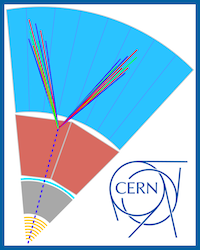Speaker
Description
The LHCb is starting to take data in Run 3 with a completely renewed DAQ system, allowing it to take data at 30 MHz, analyzing in real time the full LHC non-empty collision rate, at an instantaneous luminosity 5 times larger than the one of the past run. One novel opportunity offered by this system is triggering on long-lived particles at the earliest stages of the trigger, thus increasing efficiency with respect to previous runs.
To test the feasibility of such triggers, I have focused on moving the reconstruction of V$^0$'s from the second trigger level (HLT2) to the first (HLT1), and studied the attainable efficiency improvement.
To this purpose, I focused on some specific channels of interest for flavor physics that produce $K^0_S$ or $\Lambda^0$ in the final state; some of them having exclusively long-lived particles in the final state, like $D^0 \rightarrow K^0_SK^0_S$ and $B^0 \rightarrow K^0_SK^0_S$. Selections based on either one or two $K^0_S$ have been fully developed, optimized and tested on LHCb Run 3 simulated samples.
Results show large increases in selection efficiency for these benchmark channels (up to 2.6x for the $D^0 \rightarrow K^0_SK^0_S$ channel), at the price of a very small HLT1 computational load, and a modest increase of trigger rates. These selections have therefore been included in the default HLT1 reconstruction and trigger sequence for physics data taking in Run 3.
These improvements were obtained with a selection that is limited to tracks originating inside the tracking volume of the VELO, which limit the flight distance acceptance. We conclude with a discussion of the prospects for extending the trigger to tracks decaying outside the VELO volume ("downstream tracks"), that are expected to bring even further improvements in acceptance for LLP.
